Phage down under: stability of a travelling phage
We sent our first phage, Pae7, to collaborators across Australia, and had everyone titre it and report back. Here’s what we learned!
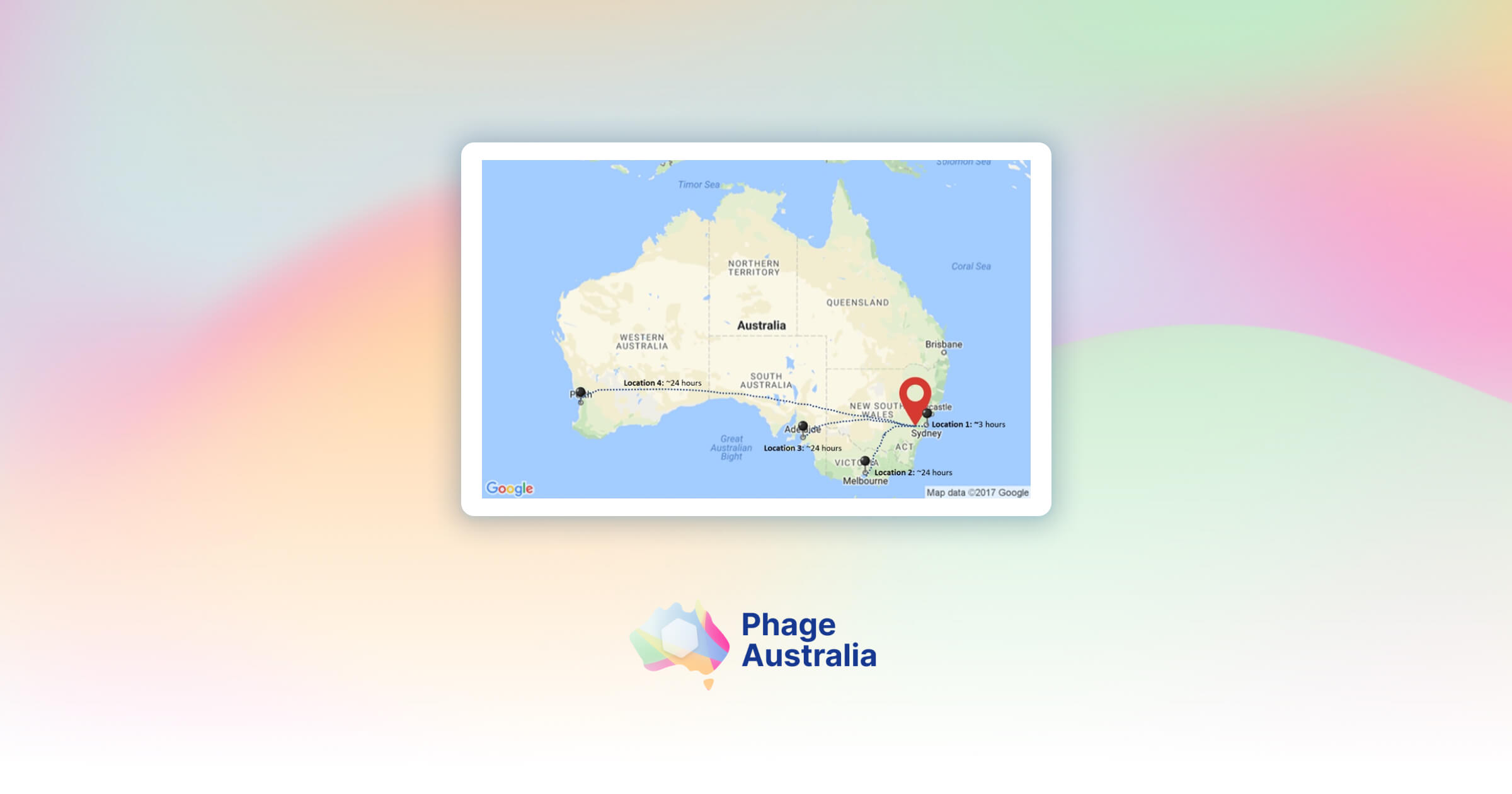
Before we start, I want to thank the following:
For receiving the phage and collecting data:
- Anthony Kicic and Renee Ng, Telethon Kids Institute, WA;
- Jeremy Barr and Dinesh Subedi, Monash University, VIC;
- Peter Speck and Legesse Garedew, Flinders University, SA;
- Rachel (Yoon) Chang and Becky Li, University of Sydney, NSW
For help designing the experiment:
- Jessica Sacher, Ruby Lin and Jon Iredell, Westmead Institute for Medical Research, NSW
For purifying the phage:
- Ali Khalid, Helene Lebhar, Chris Marquis at University of New South Wales, NSW
What is Phage Australia and why did we send phage across Australia?
Phage Australia is a national network (#AusPhageNet) of phage researchers, scientists, and clinicians who aim to professionalise phage therapy as the third major intervention for infectious diseases, after vaccines and antibiotics. While Phage Australia is led by Professor Jon Iredell at Westmead Hospital/Westmead Institute for Medical Research, the network is supported by various collaborative phage research teams across Australia.
As the network is dispersed across the country, this study was designed to send a purified Pseudomonas phage (Pae7) around Australia, to gain information about the shipping process and see how shipment may affect the titre of Pae7! This study demonstrates the beginning of our functional phage exchange network, along with a harmonised data collection system, starting with shipments between research labs within Australia.
What do we know about Pseudomonas phage Pae7?
Pae7 is a Pseudomonas phage that was isolated from sewage by researchers at Westmead Institute for Medical Research, Sydney, Australia (Ali Khalid, Matthew Smith, and Aleksandra Petrovic Fabijan). Confirmed through whole-genome sequencing (WGS), Pae7 is lytic, and belongs to the Myoviridae family, within the order ‘Caudovirales’. On its propagation host, PAO1, phage Pae7 produces medium-sized plaques that display a clear centre surrounded by a hazy ‘halo’ (Figure 1).
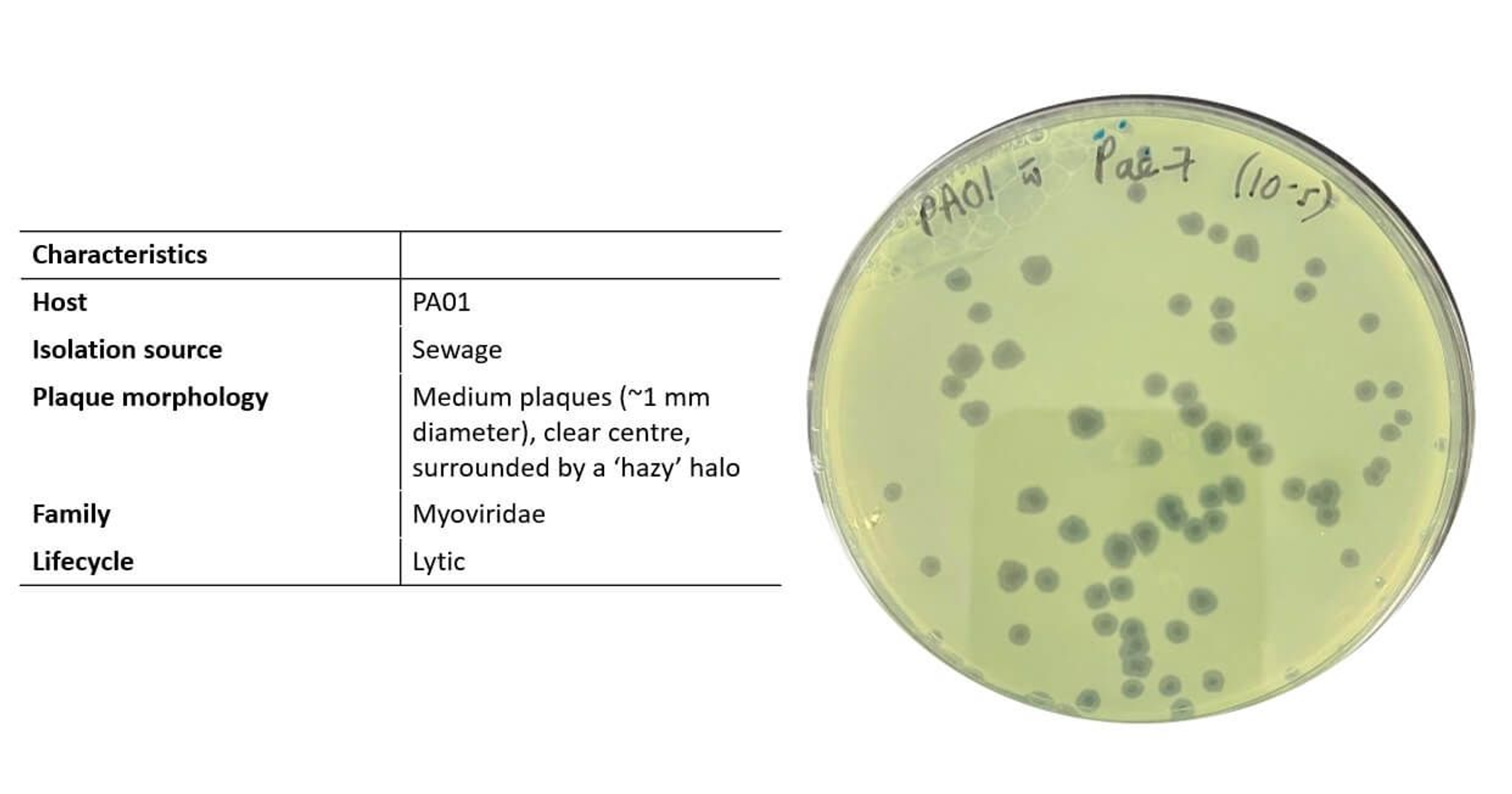
Pae7 was chosen to be sent across the network as it is the first phage to be purified using our new phage purification protocol, carried out by Ali Khalid and the School of Biotechnology & Biomolecular sciences (BABS) team at the University of New South Wales (UNSW). An overview of the purification process can be found on Twitter here.
Tweet from https://twitter.com/PhageAustralia/status/1506024687897219072.
How did we go about sending Pae7 across the country?
- On Monday (25 April 2022) prior to sending out Pae7, the research team at Westmead checked the titre of Pae7 (2.0 x 10^8 PFU/mL).
- On Tuesday (26 April 2022), Pae7 was shipped using the company World Courier to the participating teams in a 850 mL bio-bottle screw-top container containing;
- 1 x frozen ice-pack
- 2 x 1 mL Pae7 in screw-top cryotubes
- 1 x swab containing PAO1 (bacterial host of Pae7)
- Upon receiving the shipment, teams were provided with a protocol to titre Pae7 (as depicted in Figure 2 below).
- Results from each team were documented and shared through photos of the plates to show the titre of Pae7.
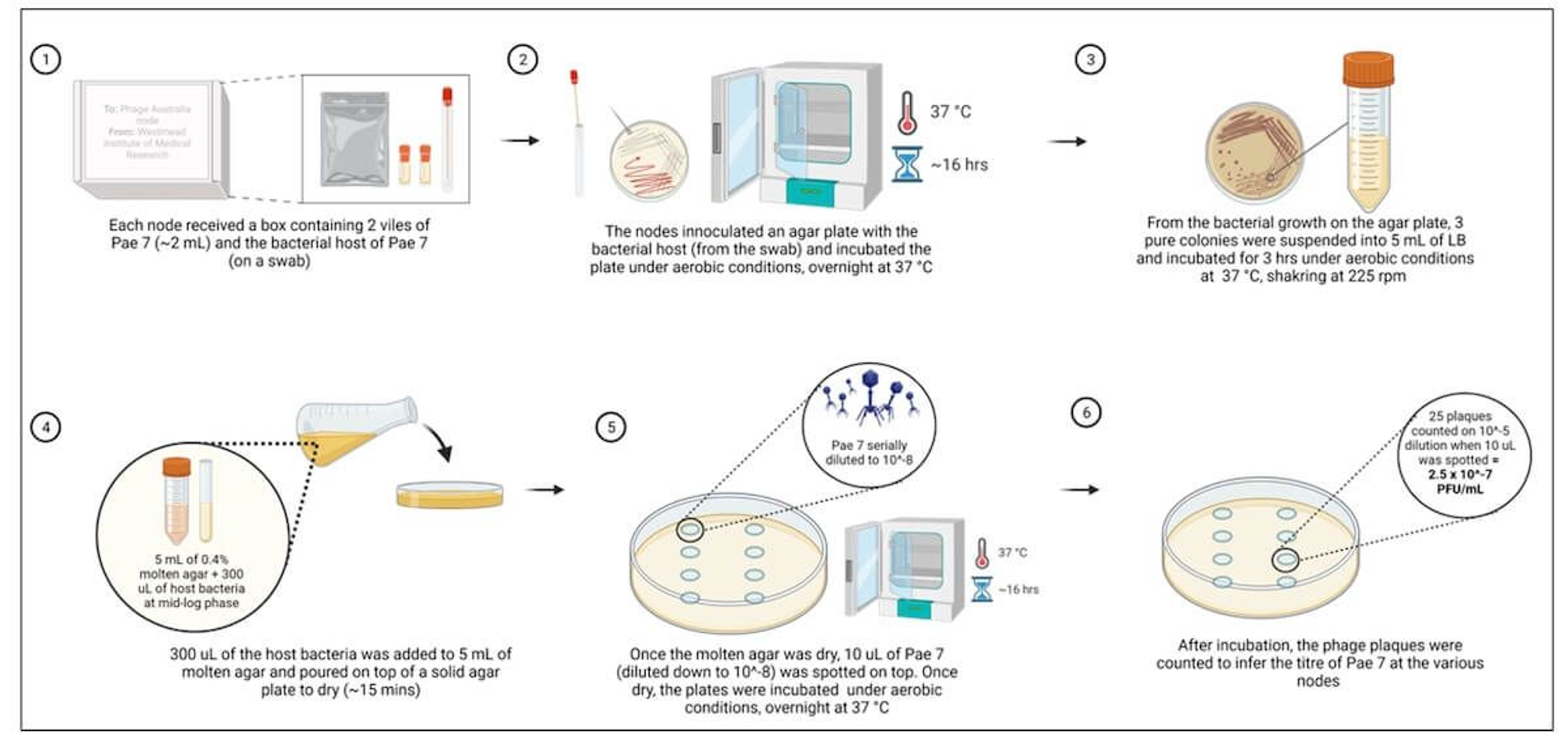
So, what did we learn from this?
Pae7 took 24 hours to reach the furthest location we shipped to
- It took ~3 hours to reach collaborators at the University of Sydney, NSW (~27 km distance), which was the closest destination (Figure 3)
- It took ~24 hours to reach Monash University, VIC (~874 km distance), Flinders University, SA (~1,359 km distance) & Telethon Kids Institute, WA (~3,921km distance) (Figure 3).
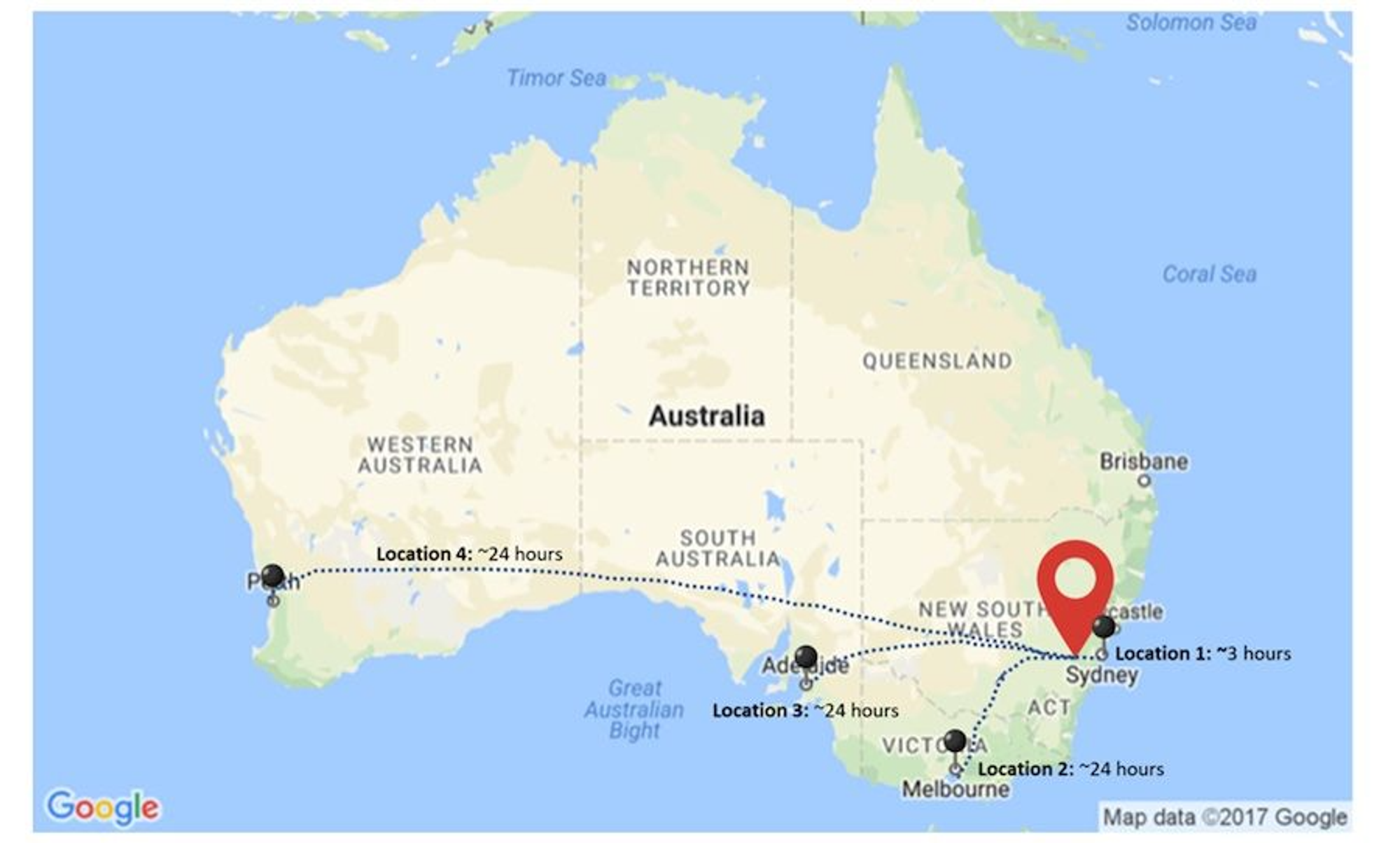
The time required for various geographical locations to receive Pae7 was an important finding, as it would allow us to better plan phage shipments in the future. It would also be interesting for us to get clues about whether the titre of Pae7 might be influenced by location/time taken for Pae7 to travel (e.g. would a longer shipping time result in a lower titre of Pae7 on arrival). However, it should be noted that there may have been unforeseen temperature fluctuations even at room temperature shipping that were not controlled for here.
The observed titre of Pae7 spanned a ~1-2 log range
- Researchers that received Pae7 were asked to titre the stock on arrival using the methods outlined in Figure 2.
- When Pae7 was shipped from Westmead Institute, the titre was recorded as 2 x 10^8 PFU/mL (Figure 4a)
- The first location to receive Pae7 was the University of Sydney, NSW (arrived ~3 hrs after shipping), where researchers recorded a titre of 3.8x10^7 PFU/mL (-0.72 log drop). (Figure 4a)
- The next three locations to receive Pae7 were Telethon Kids Institute, WA, Flinders University, SA and Monash University, VIC. Pae7 arrived ~24 hrs after shipping and the researchers recorded a titre of 1.85 x 10^7 PFU/mL (-1.03 log drop) (Telethon Kids, WA), 1.0 x 10^6 PFU/mL (-2.30 log drop) (Flinders University, SA) and 1.2 x 10^7 PFU/mL (-1.22 log drop) (Monash University, VIC). (Figure 4a)
- We saw an average drop of 1.3 log PFU/mL, and max drop of 2.3 logs (Flinders University).
- The distance and time taken to receive Pae7 don’t appear to correlate with the magnitude of the drop in titre.
- Even being transported across the same city led to a 0.72-log drop
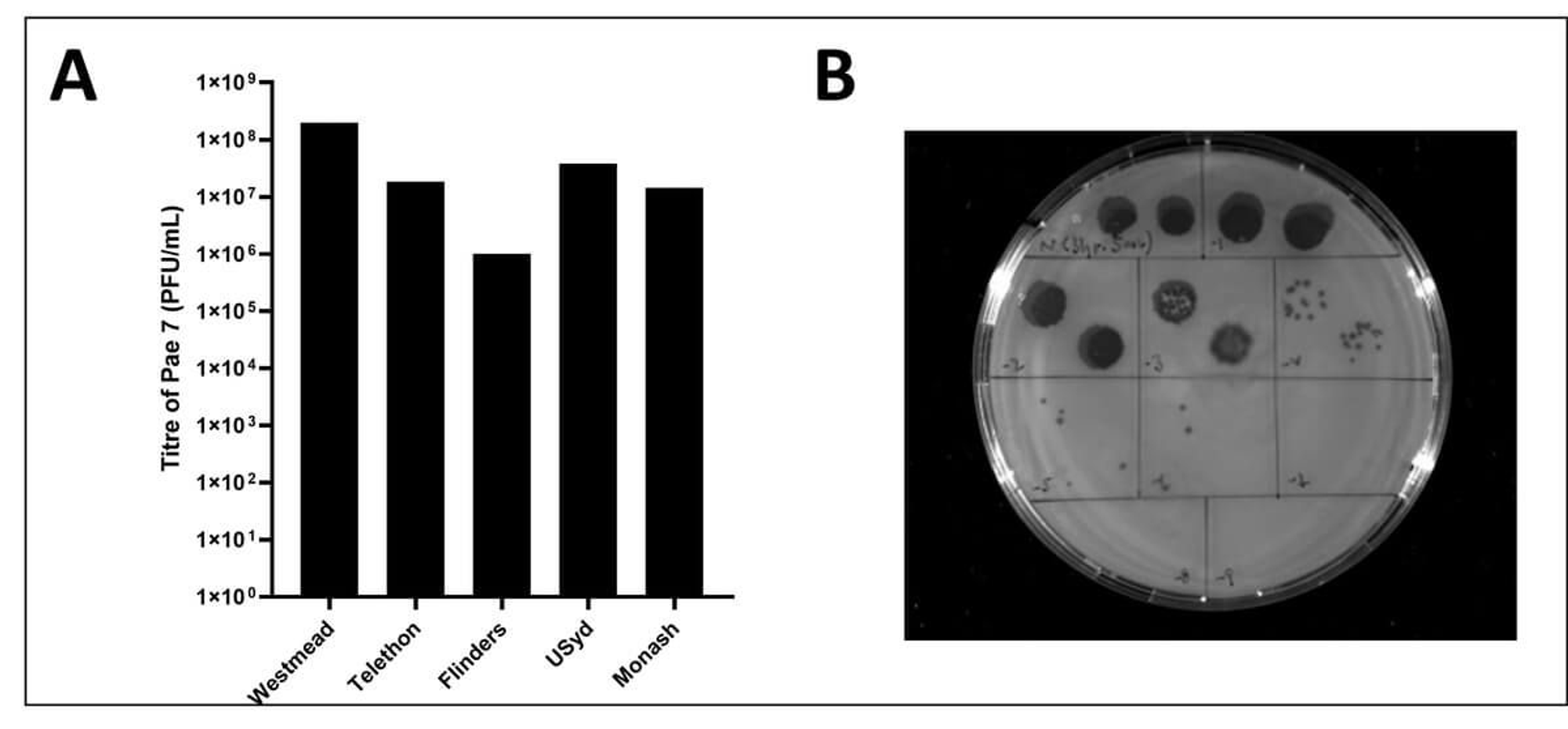
Salt concentration in media may influence Pae7 titre, plaque formation, and PAO1 pigmentation
While we noted that distance traveled or time taken to receive Pae7 didn’t seem to affect the titre of Pae7, a PhD student at Telethon Kids Institute, Renee Ng, took a deep dive into what other factors may affect the titre, plaque morphology and growth of PAO1.
Here is what she found:
- PAO1 grown in LB overlay with different salt concentrations affects pigmentation slightly: it appears that PAO1 has a yellow-green colouring when grown in LB Miller overlay, compared to showing a green-blue colouring when grown in LB Lennox overlay.
- The two different LB formulations affected Pae7 titre: Renee noted a ~1-log reduction in Pae7 titre when using LB Miller overlay (10g/L NaCl) compared to LB Lennox (5 g/L NaCl)
- It is important to note here that LB Miller and LB Lennox contain the same ingredients: Tryptone, Yeast Extract and Sodium Chloride, however, LB Miller has twice the amount of Sodium Chloride as LB Lennox (10 g/L vs 5 g/L)

Concluding remarks
Overall, this experience helped us get a sense of what to expect when shipping phages around Australia, and the approximate range in titre that we should expect to see. Since we’ll be doing this a lot in the future as the Phage Australia network gets up and running, it’s good to know that even using a standardized protocol that labs have experience with, and the exact same strains and phage, and only 24 h in transit, we can see a 1-2 log range in phage titres.
These results also provide some unexpected and interesting insights into other factors that may affect the titre of Pae7 beyond the distance of shipping or time taken to receive the phage, such as the brand of media a lab uses.
Lastly, these results also show what a ‘peer-replicate’ system could look like for phage lab work, showing a taste of the value that a network like Phage Australia can bring if we have a system in place for validating each other’s work. (More on this to come as we develop Phage Australia’s phage exchange program!)